27 top Linux-powered Christmas gifts
Dec 23, 2011 — by LinuxDevices Staff — from the LinuxDevices Archive — 9 viewsIt's no longer hard to find a Christmas gift that runs Linux, thanks to the popularity of Google's Android. The Tuxy possibilities go far beyond tablets and smartphones, however, as we highlight in a list of 27 top gift picks for 2011.
Not that long ago, it was hard to find consumer-oriented devices that ran Linux — and the idea of finding it on a smartphone or tablet was nearly unthinkable. Now, of course, Android (Google's Linux-plus-Java combo) has changed all that.
So many Android phones and tablets are on the market that, in order to keep this list of potential gifts down to 27 — it was originally meant to be 24! — I had to struggle to keep these gadgets out of it. (Another reason for not listing most is that so many of the flagship models intro'd earlier this year have quickly become passé.)
When you're dealing with tech, of course, obsolescence is the rule. None of these Christmas gifts will ever be passed down as family heirlooms. Buy them for what you or your intended recipient can do with them today, and enjoy the fact that for more than ten years now, Linus Torvalds' open source operating system has been making gadgets faster, cheaper, and more flexible.
I've listed the last-minute Christmas gifts in order of their original appearance on LinuxDevices.com. You can click on the links for more information on any of them.
 HP Pavilion dm1z — Netbooks fell into decline during 2011, and while most observers blamed tablets, it was really Intel-imposed limitations on screen resolution and processing power that did them in. HP's Linux-ready Pavilion dm1z was the first to break these bounds, offering a 1366 x 768-pixel screen, a dual-core AMD E-350 CPU, and the ability to accept up to 8GB of RAM. Since updated, it's still a great choice.
HP Pavilion dm1z — Netbooks fell into decline during 2011, and while most observers blamed tablets, it was really Intel-imposed limitations on screen resolution and processing power that did them in. HP's Linux-ready Pavilion dm1z was the first to break these bounds, offering a 1366 x 768-pixel screen, a dual-core AMD E-350 CPU, and the ability to accept up to 8GB of RAM. Since updated, it's still a great choice.
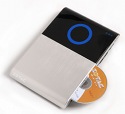 Zotac Zbox AD03 — As well as featuring in many embedded devices, AMD's Fusion CPUs have also formed the basis of many compact, HD-ready mini-PCs. I could have chosen many others from 2011's crop, but Zotac's Zbox AD03 made the cut because of its integral Blu-ray drive and component-like styling.
Zotac Zbox AD03 — As well as featuring in many embedded devices, AMD's Fusion CPUs have also formed the basis of many compact, HD-ready mini-PCs. I could have chosen many others from 2011's crop, but Zotac's Zbox AD03 made the cut because of its integral Blu-ray drive and component-like styling.
 CompuLab Trim-Slice — CompuLab's Trim-Slice is another mini-PC, but this time featuring a pre-installed Linux build and a dual-core, 1GHz Nvidia Tegra 2 processor. Available with or without a hard disk drive, it uses less than three Watts, and will provide you with an affordable look at the future of computing — whether you're a developer or just intellectually curious.
CompuLab Trim-Slice — CompuLab's Trim-Slice is another mini-PC, but this time featuring a pre-installed Linux build and a dual-core, 1GHz Nvidia Tegra 2 processor. Available with or without a hard disk drive, it uses less than three Watts, and will provide you with an affordable look at the future of computing — whether you're a developer or just intellectually curious.
 Samsung Galaxy Player 4" and 5" — Samsung's Galaxy Players provide the features of an Android smartphone, but, since they aren't actually handsets, won't stick your recepient with any monthly expenses. Offering music playback plus Flash-enabled web browsing, they're a serious alternative to Apple's popular iPod touch.
Samsung Galaxy Player 4" and 5" — Samsung's Galaxy Players provide the features of an Android smartphone, but, since they aren't actually handsets, won't stick your recepient with any monthly expenses. Offering music playback plus Flash-enabled web browsing, they're a serious alternative to Apple's popular iPod touch.
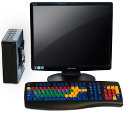 Kiwi PC — Yes, you could assemble a Linux-powered PC for your mom or dad on your own for less than the cost of this system, but then you'd have to provide tech support too. The Kiwi PC uses a modified version of Ubuntu whose menus, icons, and text have been simplified for seniors, and there's a color-coded keyboard designed to make operation extra-simple.
Kiwi PC — Yes, you could assemble a Linux-powered PC for your mom or dad on your own for less than the cost of this system, but then you'd have to provide tech support too. The Kiwi PC uses a modified version of Ubuntu whose menus, icons, and text have been simplified for seniors, and there's a color-coded keyboard designed to make operation extra-simple.
 Commodore 64 — Say what? Yes, this PC looks just like the 8-bit personal computer that was first introduced in the early 80s, but instead of cassette storage, it comes with an internal hard disk drive loaded with Linux. There's a choice of processors, ranging from the humble Atom on up to the Core i7, and all the other modern conveniences you'd hope for, including an HDMI port.
Commodore 64 — Say what? Yes, this PC looks just like the 8-bit personal computer that was first introduced in the early 80s, but instead of cassette storage, it comes with an internal hard disk drive loaded with Linux. There's a choice of processors, ranging from the humble Atom on up to the Core i7, and all the other modern conveniences you'd hope for, including an HDMI port.
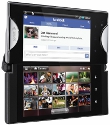 Kyocera Echo — Sprint's Kyocera Echo smartphone is a unique Android gadget that has two 3.5-inch touchscreens, allowing it to work like a 4.78-inch tablet. If the sub-par battery life doesn't faze you, the Echo is an enjoyable phone that may give you all the tablet you really need, according to eWEEK's reviewer. Whatever else, it's certainly novel.
Kyocera Echo — Sprint's Kyocera Echo smartphone is a unique Android gadget that has two 3.5-inch touchscreens, allowing it to work like a 4.78-inch tablet. If the sub-par battery life doesn't faze you, the Echo is an enjoyable phone that may give you all the tablet you really need, according to eWEEK's reviewer. Whatever else, it's certainly novel.
 Raspberry Pi — Originally designed like a USB stick but now the size of a credit card, the Raspberry Pi is a tiny ARM11-basd computer that runs Ubuntu Linux and will cost just $25. Yep, the "will" betrays that the foundation behind the device won't manage to ship the devices until January, but at this price you could easily afford to give an IOU.
Raspberry Pi — Originally designed like a USB stick but now the size of a credit card, the Raspberry Pi is a tiny ARM11-basd computer that runs Ubuntu Linux and will cost just $25. Yep, the "will" betrays that the foundation behind the device won't manage to ship the devices until January, but at this price you could easily afford to give an IOU.
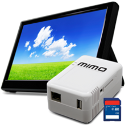 MimoMonitors MimoPlug — MimoMonitors.com adopted the Marvell SheevaPlug design to create a device that turns any of its USB-based touchscreen displays into a mini-PC. The compact, 1.2GHz MimoPlug features 512MB of RAM, 512MB of flash storage, an SD slot, and gigabit Ethernet, plus a USB port, and comes with screens from seven to 10 inches in bundles starting at under $400.
MimoMonitors MimoPlug — MimoMonitors.com adopted the Marvell SheevaPlug design to create a device that turns any of its USB-based touchscreen displays into a mini-PC. The compact, 1.2GHz MimoPlug features 512MB of RAM, 512MB of flash storage, an SD slot, and gigabit Ethernet, plus a USB port, and comes with screens from seven to 10 inches in bundles starting at under $400.
 Sony Xpera Active — Sony Ericsson's Android 2.3-based, 1GHz Xperia Active stands out by being ready to help out with New Year's resolutions. It includes both water reistance and "wet finger" tracking, plus Dynastream Innovations' Ant+ technology, allowing users to monitor their heart rates onscreen while working out.
Sony Xpera Active — Sony Ericsson's Android 2.3-based, 1GHz Xperia Active stands out by being ready to help out with New Year's resolutions. It includes both water reistance and "wet finger" tracking, plus Dynastream Innovations' Ant+ technology, allowing users to monitor their heart rates onscreen while working out.
 Archos 35 Home Connect — Again for those who want to play with Android without incurring carrier fees, the Archos 35 Home Connect has a 3.5-inch touchscreen plus a pair of stereo speakers. It includes a webcam, alarm application, and TuneIn internet radio software.
Archos 35 Home Connect — Again for those who want to play with Android without incurring carrier fees, the Archos 35 Home Connect has a 3.5-inch touchscreen plus a pair of stereo speakers. It includes a webcam, alarm application, and TuneIn internet radio software.
 Roku LT, HD, XD, and XS — While they now have many competitors, Roku's Linux-powered streaming media players can still be considered the industry standard. The $50 Roku LT provides 720p video playback of Netflix, streams Pandora internet radio, and supports 300 other "channels," while other models range up to the $100 Roku 2 XS, which provides Ethernet, USB, and a motion-control remote.
Roku LT, HD, XD, and XS — While they now have many competitors, Roku's Linux-powered streaming media players can still be considered the industry standard. The $50 Roku LT provides 720p video playback of Netflix, streams Pandora internet radio, and supports 300 other "channels," while other models range up to the $100 Roku 2 XS, which provides Ethernet, USB, and a motion-control remote.
 gScreen Spacebook — This monster laptop computer sports dual 17-inch displays, each with 1920 x 1080 pixels. gScreen's "SpaceBook" comes with a Nvidia GTS 250M discrete graphics processing unit, a 500GB hard disk drive, a DVD drive, and a choice of Intel Core i5 or i7 processors.
gScreen Spacebook — This monster laptop computer sports dual 17-inch displays, each with 1920 x 1080 pixels. gScreen's "SpaceBook" comes with a Nvidia GTS 250M discrete graphics processing unit, a 500GB hard disk drive, a DVD drive, and a choice of Intel Core i5 or i7 processors.
 Vinci Tab — I must admit the idea of giving a todder a tablet sets my teeth on edge, for all kinds of reasons, but I know some people disagree. If you're one of them, Vinci's seven-inch Tab will fit the bill, featuring a special handle that increases safety. The Fuhu Nabi will also delight your little Android fan.
Vinci Tab — I must admit the idea of giving a todder a tablet sets my teeth on edge, for all kinds of reasons, but I know some people disagree. If you're one of them, Vinci's seven-inch Tab will fit the bill, featuring a special handle that increases safety. The Fuhu Nabi will also delight your little Android fan.
 Parrot Asteroid — While in-car infotainment systems are easy to find, many of us drive older vehicles (in the case of journalists, that's usually out of necessity). Parrot's Android-based Asteroid looks as though it would even fit in my 1989 Crown Vic, thans to being a single-DIN unit, yet it offers phone integration and built-in access to internet radio. If I found one under my tree, I'd finally be able to retire all those cassettes!
Parrot Asteroid — While in-car infotainment systems are easy to find, many of us drive older vehicles (in the case of journalists, that's usually out of necessity). Parrot's Android-based Asteroid looks as though it would even fit in my 1989 Crown Vic, thans to being a single-DIN unit, yet it offers phone integration and built-in access to internet radio. If I found one under my tree, I'd finally be able to retire all those cassettes!
 Netgear Wireless Extreme — Netgear's Wireless Extreme is the first of the company's Linux-based Wi-Fi routers to offer Mac-specific features such as native support for Apple's Time Machine backup and Bonjour automated networking technology. If your recipient doesn't have Macs, you could instead choose the WNDR3800, a dual-channel 802.11n router that can automatically switch to the secomd channel when the first gets overcrowded.
Netgear Wireless Extreme — Netgear's Wireless Extreme is the first of the company's Linux-based Wi-Fi routers to offer Mac-specific features such as native support for Apple's Time Machine backup and Bonjour automated networking technology. If your recipient doesn't have Macs, you could instead choose the WNDR3800, a dual-channel 802.11n router that can automatically switch to the secomd channel when the first gets overcrowded.
 Pogoplug Series 4 — Several of Pogoplug's interesting Linux-on-ARM storage devices were released during 2011, and they're all worth selecting. The newest is the $100 Series 4, which adds more local storage options, including two USB 3.0 ports and a SATA port compatible with SeaGate GoFlex hard disk drives.
Pogoplug Series 4 — Several of Pogoplug's interesting Linux-on-ARM storage devices were released during 2011, and they're all worth selecting. The newest is the $100 Series 4, which adds more local storage options, including two USB 3.0 ports and a SATA port compatible with SeaGate GoFlex hard disk drives.
 HTC Rhyme — HTC and Verizon offer an smartphone designed for women who might otherwise find Android too butch. The 3.7-inch device comes fully accessorized, with a Bluetooth headset, a speaker-equipped docking station, and a cable that lights up when calls or texts are received (and may be used to pull the phone out of a purse).
HTC Rhyme — HTC and Verizon offer an smartphone designed for women who might otherwise find Android too butch. The 3.7-inch device comes fully accessorized, with a Bluetooth headset, a speaker-equipped docking station, and a cable that lights up when calls or texts are received (and may be used to pull the phone out of a purse).
 Amazon Kindle Fire — Likely needing little introduction at this point, Amazon's hot-selling Kindle Fire is a $200 tablet a seven-inch color IPS (in-plane switching display), "cloud-accelerated" Silk browser, dual-core processor, and 8GB of flash storage.
Amazon Kindle Fire — Likely needing little introduction at this point, Amazon's hot-selling Kindle Fire is a $200 tablet a seven-inch color IPS (in-plane switching display), "cloud-accelerated" Silk browser, dual-core processor, and 8GB of flash storage.
 Samsung Galaxy Tab 7.0 Plus — Samsung's Galaxy Tab 7.0 Plus is a high-quality tablet for those who want the full Android experience in a seven-inch package. The Kindle Fire and Nook Tablet make it look pricey, but this more luxurious tablet will reportedly get an Android 4.0 ("Ice Cream Sandwich") upgrade, positioning it as a long-term investment.
Samsung Galaxy Tab 7.0 Plus — Samsung's Galaxy Tab 7.0 Plus is a high-quality tablet for those who want the full Android experience in a seven-inch package. The Kindle Fire and Nook Tablet make it look pricey, but this more luxurious tablet will reportedly get an Android 4.0 ("Ice Cream Sandwich") upgrade, positioning it as a long-term investment.
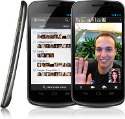 Samsung Galaxy Nexus — eWEEK recently called Samsung's Galaxy Nexus the "king fish among Android communicators," citing its 1.2GHz dual-core processor, impressive 4.65-inch display with a resolution of 1280 x 720 pixels. Feauturing an NFC (near field communication) chip and compatibility with 4G LTE and HSPA+ networks, the phone also has a "zero lag" five megapixel camera.
Samsung Galaxy Nexus — eWEEK recently called Samsung's Galaxy Nexus the "king fish among Android communicators," citing its 1.2GHz dual-core processor, impressive 4.65-inch display with a resolution of 1280 x 720 pixels. Feauturing an NFC (near field communication) chip and compatibility with 4G LTE and HSPA+ networks, the phone also has a "zero lag" five megapixel camera.
 Motorola Mobility Droid Razr — Vying for cellular supremacy is Motorola Mobility's Droid Razr, again compatible with Verizon's 4G LTE network. It includes a Kevlar-reinforced case just 0.28 inches thick, a dual-core, 1.2GHz processor, a 4.3-inch screen packing 960 x 540 pixels, dual cameras, and accessories including a 14-inch Lapdock 500 Pro docking station.
Motorola Mobility Droid Razr — Vying for cellular supremacy is Motorola Mobility's Droid Razr, again compatible with Verizon's 4G LTE network. It includes a Kevlar-reinforced case just 0.28 inches thick, a dual-core, 1.2GHz processor, a 4.3-inch screen packing 960 x 540 pixels, dual cameras, and accessories including a 14-inch Lapdock 500 Pro docking station.
 VizuaLogic SmartLogic Rear Seat Entertainment Package — VizuaLogic's $700 device is a touchscreen computer that runs Android 2.3 and is integrated into a car's front headrest (presumably, it will be available in styles for popular upmarket vehicles, likely not including my Crown Vic). The device will provide passengers with a seven-inch capacitive touchscreen, a 1GHz processor, 512MB of RAM, plus Wi-Fi, Bluetooth, IR, USB, microSD, and HDMI connections.
VizuaLogic SmartLogic Rear Seat Entertainment Package — VizuaLogic's $700 device is a touchscreen computer that runs Android 2.3 and is integrated into a car's front headrest (presumably, it will be available in styles for popular upmarket vehicles, likely not including my Crown Vic). The device will provide passengers with a seven-inch capacitive touchscreen, a 1GHz processor, 512MB of RAM, plus Wi-Fi, Bluetooth, IR, USB, microSD, and HDMI connections.
 BeagleBone — BeagleBoard.org's latest open-platform, hobbyist-focused development board costs just $89 and comes with a Linux distro that boots in ten seconds. The BeagleBone offers an ARM Cortex-A8 processor running at 720MHz, 256MB of RAM, two 46-pin expansion connectors, a USB host port and multipurpose device port, on-chip Ethernet, and a microSD slot.
BeagleBone — BeagleBoard.org's latest open-platform, hobbyist-focused development board costs just $89 and comes with a Linux distro that boots in ten seconds. The BeagleBone offers an ARM Cortex-A8 processor running at 720MHz, 256MB of RAM, two 46-pin expansion connectors, a USB host port and multipurpose device port, on-chip Ethernet, and a microSD slot.
 Asus Eee Pad Transformer Prime — Few will have been able to obtain one in time for Christmas, but the Asus Eee Pad Transformer Prime can definitely be considered the tablet du jour. It includes a quad-core Nvidia Tegra 3 processor clocked at 1.3GHz, an eight-megapixel camera, and up to 12 hours of claimed battery life — or 18 hours when plugged into the optional keyboard dock. With a $500 price, a promised Ice Cream Sandwich upgrade, and enthusiastic early reviews, it looks like a good bet.
Asus Eee Pad Transformer Prime — Few will have been able to obtain one in time for Christmas, but the Asus Eee Pad Transformer Prime can definitely be considered the tablet du jour. It includes a quad-core Nvidia Tegra 3 processor clocked at 1.3GHz, an eight-megapixel camera, and up to 12 hours of claimed battery life — or 18 hours when plugged into the optional keyboard dock. With a $500 price, a promised Ice Cream Sandwich upgrade, and enthusiastic early reviews, it looks like a good bet.
 Nook Tablet and Nook Color — Barnes & Noble's $250 Nook Tablet and $200 Nook Color offer very similar hardware, and both include seven-inch screens and similar hardware. Recipients should be happy to get either, but the Tablet gets 16GB of flash storage instead of 8GB and a microSD slot — something you won't find on the Kindle Fire.
Nook Tablet and Nook Color — Barnes & Noble's $250 Nook Tablet and $200 Nook Color offer very similar hardware, and both include seven-inch screens and similar hardware. Recipients should be happy to get either, but the Tablet gets 16GB of flash storage instead of 8GB and a microSD slot — something you won't find on the Kindle Fire.
 Kyobo E-Reader — You'll have to travel to Korea for Christmas to buy one, but the Kyobo Book Centre's 5.7-inch e-reader is the first to use a Mirasol display from Qualcomm's MEMS Technologies (QMT) division. That means it offers sunlight-readable color, a frame rate that makes it possible to browse the web, plus "weeks of reading on a single charge."
Kyobo E-Reader — You'll have to travel to Korea for Christmas to buy one, but the Kyobo Book Centre's 5.7-inch e-reader is the first to use a Mirasol display from Qualcomm's MEMS Technologies (QMT) division. That means it offers sunlight-readable color, a frame rate that makes it possible to browse the web, plus "weeks of reading on a single charge."
Jonathan Angel can be reached at [email protected] and followed at www.twitter.com/gadgetsense.
This article was originally published on LinuxDevices.com and has been donated to the open source community by QuinStreet Inc. Please visit LinuxToday.com for up-to-date news and articles about Linux and open source.